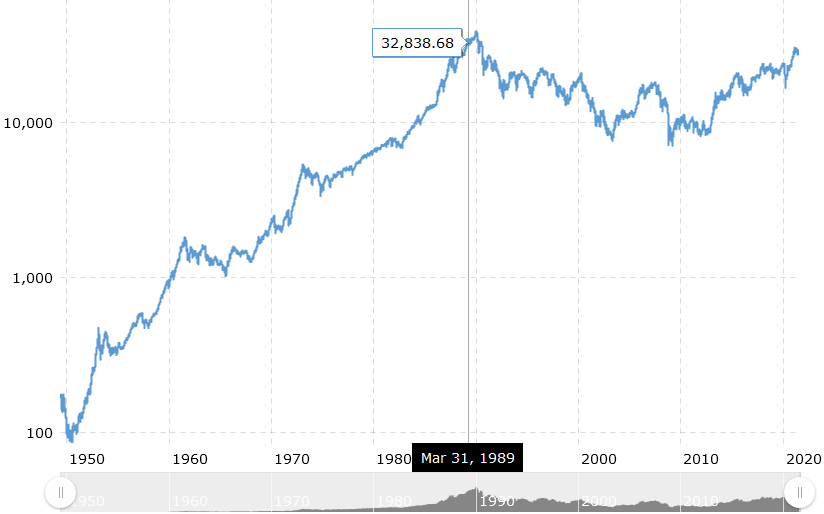The last time I saw something like the U.S. today was Japan in 1989.
I’m not talking about stock valuations or bond yields specifically (although there are obvious so-high, so-low echoes) I’m talking about a collective investor psyche or a ‘confidence-bubble’ in both cases.
Japan’s asset prices, by 1989, had spent a decade rolling over Cassandras. There were no bears left and investors dominating decisions then were a combination of enthusiastic punters (Mrs. Watanabes) and it’s-all-about-the-future-you-know institutional types happy to play the game with lots of other people’s money. Robin-hoodies and Cathy Woods types today?
Money making money that made other money that made more money back in Japan’s heyday was called ‘high-tech finance’ or Zaitech. Today in the U.S., among other excesses-in-plain-sight, we have a ‘SPAC-craze’ and crypto-‘currencies’. Same-same, but different.
Until U.S. markets roll over though there’s little mileage in teasing out more direct parallels, except one very important one, which I’ll come on to. BTW, how do we know U.S. markets will roll over? For this not to happen I’d need to be convinced the nature of human beings which, we observe has altered little in around 5,000 years, has changed; and it hasn’t.
Let me digress briefly to describe Japan investors’ confidence-bubble. Investors into Japanese assets in 1989 believed in the rightness of that economic model, Japan’s historic destiny and the superiority of many of their institutions; and the reflection of all that in fragrant asset prices provided a ‘the proof is all around you!’ circular reference.
Investors into American assets today seem not to be quite so agreed about the superiority of the U.S. model, but enough are to be taking asset prices to levels that only hubris, of one variety or another, can continue to support.
What upended the Japan party? The same thing that’s likely to upend the U.S. one, interest rates, and a look at the Japan experience in this regard may provide useful instruction for investors today.
In response to an external shock (the forced forcing-up of the Yen) Japan had pushed interest rates earlier in the ’80s to what were regarded as necessary-crisis-lows (sound familiar?). They were slow to take their foot off the gas until May 30th 1989 when the official discount rate went up, finally, from 2.5% to 3.25%. However, the then confidence-bubble was so powerful stock prices failed to take cognizance and the party continued.
In fact, rocking markets rocked-on despite two further interest rate hikes. The discount rate was raised again in October 1989 from 3.25% to 3.75% and (famously on the 25th with foreigners mostly not at their desks) in December from 3.75% to 4.25%. Still the Rasputin of stock markets refused to die peaking at last in January 1990.
The lesson here is that when the Fed in the U.S. begins the restoration of interest rates to more ‘normal’ levels it would be quite in character for investors to not only not blink but perhaps even to increase bets. A plausible narrative might be ‘The Fed is only reacting, behind the curve, to the reality of an ever strengthening economy, buy more!’
Investors in Japanese assets in 1989 have had 30+-years to dwell upon the inevitability of what happens when over-inflated asset prices and hubris meet economic reality and higher interest rates.
I doubt America’s asset price reckoning will be anything like as long but that some iteration of this same story will play out in the U.S. is in no doubt. Only the timing of the event, its severity and the length of the recovery process are the outstanding known-unknowns.
That a 1989-Japan-style confidence-bubble has formed around U.S. asset prices is manifest and the ‘what next?’ seems clear. We shouldn’t be too surprised though if some of the signs a confidence-bubble-pop is beginning are initially and counterintuitively cheered.
Nial Gooding
Saturday, August 7th 2021

